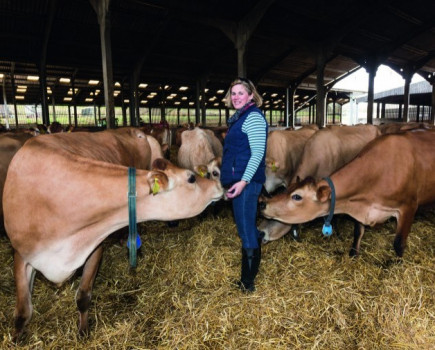I usually write this article about a week to 10 days before it is published. That means I have to be prescient at best and lucky at worst, if my forecast proves to be correct by the time you read it. If we are talking about fundamentals I stick by my “three out of five” predictions, which I usually get right. However, recent extreme rapid changes, whether in our government, currency or Ukraine means that anything you write down can be instantly historic or wrong within 24 hours!
I would describe our current trading climate as having the same tune, but with lyrics that are changing all the time. That is to say, the backdrop narrative is that we still have enough grain in the UK to meet our domestic needs and have to export the surplus. How much? I hear you ask. Well, the AHDB is suggesting that, based on the second-best yields of all time, we have a 15.6 million tonne crop of wheat, which is more than many trade estimates, so that could mean at least a million tonne surplus.
To counter that, the UK had shipped about 400,000 tonnes by the end of September and, being the cheapest European source behind the Ukraine, we are busy making feed wheat export sales well into the new year. All of that surplus should go, maybe even by the end of December.
The other familiar old tune is the hokey cokey of whether or not Putin will close the export grain corridor from Ukraine. One minute he’s going to, because he thinks that weapons used to destroy the Kerch Strait bridge came through the corridor, then he’s not. Also cited are sanctions which cause problems with delayed payments, shipping, insurance etc, but most of all it’s because it would disrupt trading in the west and ensure that Ukraine does not receive money from exports which it could use to buy weapons.
I think Russia will close the corridor, and even though the trade should expect it, it won’t stop the wheat futures spiking up by £10 a tonne when it does. Meantime the bombing of sunflower storage tanks in the port of Nikolaev, together with the rocket and drone attacks on Kiev, indicate no let-up in the conflict. So Ukraine remains a game changer still.
For the UK, supply and demand for our ethanol production is another big swing factor. There have been recent rumours that one or both of the plants could cease production in the new year. If that happened, you could add another 800,000 tonnes of lost demand to the wheat surplus. That could tip the balance and make the disposal of the UK wheat surplus more difficult before next harvest.
Apart from this main concern, there are too many world side shows taking place to name them all. At another time the absence of China and Saudi Arabia from making big purchases of barley would make alarm bells ring. The expected slipping into recession and energy crises all presage a reduction in demand for everything we produce.
I will continue to sing my same song in that the UK has had a great year of production, despite which prices are still at historical highs, apart from the wartime values six months ago. So if you need to sell more in November or December, get on with it – and try to catch the spike when the corridor is closed.
If you have the money and storage, you can play the longer game with wheat for February to July, not least because Ukraine may only be able to plant 50% of its normal wheat crop and other Eastern European or Balkan countries may only plant 75% of theirs because they don’t have the fertiliser. This would not only have an impact on the 2023 harvest market, but the remainder of 2022, too.
By the time you read this, the UK will have a new Prime Minister. I wonder what odds I would get if I placed a double bet for a new Russian President at the same time?
Meantime I will return to polishing my crystal ball.







